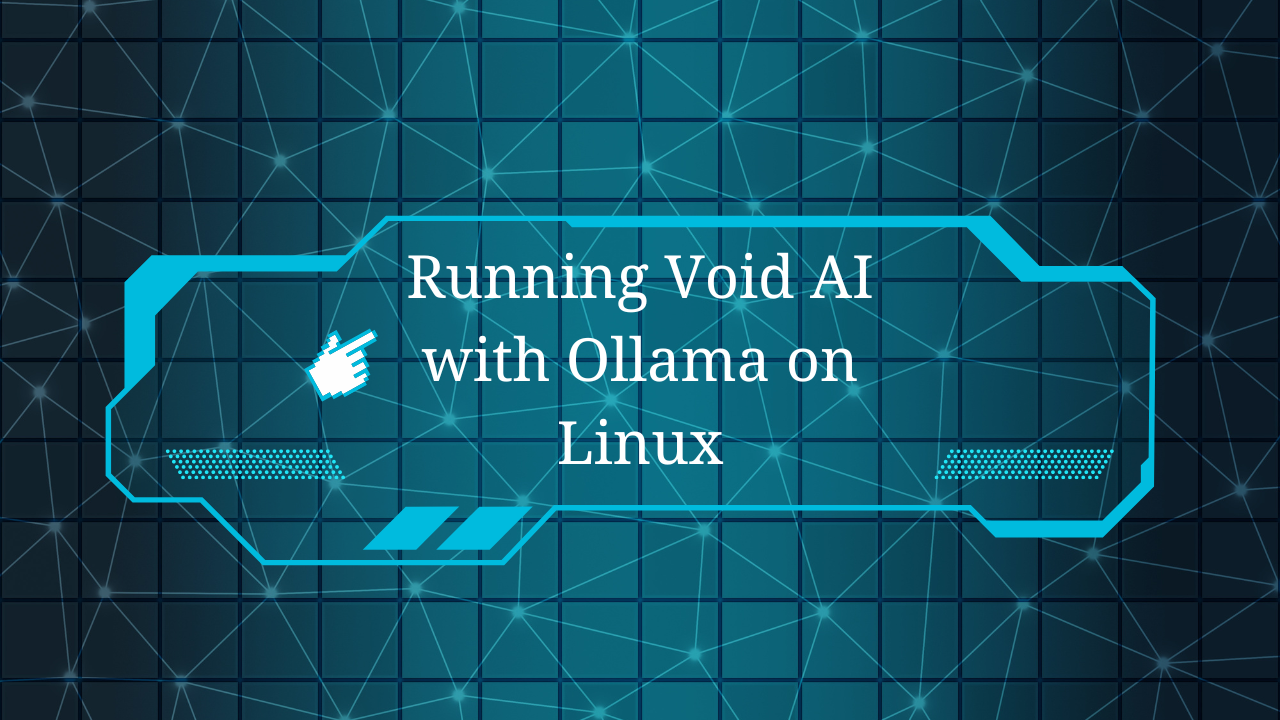Running Void AI with Ollama on Linux: A Comprehensive Guide

Void Linux is a lightweight, systemd-free Linux distribution lauded for its speed, minimalism, and control. With the rise of local AI and Large Language Models (LLMs), tools like Ollama have made it easier for users to run advanced AI models on their own hardware.
This guide provides a thorough walkthrough for installing and running Void AI with Ollama on Linux, covering everything from system preparation to advanced configuration and troubleshooting.
Understanding the Components
Void Linux Overview
- Independent Distribution: Not based on Debian, Ubuntu, or Arch — built from scratch.
- Init System: Uses
runitinstead ofsystemd. - Key Features: Fast, bloat-free, rolling release model, and uses
xbpsfor package management.
Ollama Overview
- Purpose: Run LLMs like Llama 2, Phi-3, and more locally.
- Access: Offers CLI and API interfaces for managing and running models.
- Integration: Serves as a backend for tools like Void IDE and other AI-enabled apps.
Preparing Your System
System Requirements
- Void Linux Version: Latest (glibc or musl).
- Memory: 8GB+ RAM recommended; more for larger models.
- GPU: Optional but useful. NVIDIA or AMD supported.
- User Access:
sudoprivileges required.
Update Your System
sudo xbps-install -Syu
Installing Ollama on Void Linux
Method 1: Official Installation Script
curl -fsSL https://ollama.com/install.sh | sh
- Installs Ollama to
/usr/local/bin. - Sets up necessary groups and permissions.
Notes for Void-musl Users
Ollama may not work out-of-the-box due to ABI issues.
Workaround: Build from Source
xbps-install -Sy bash git go gcc cmake make
git clone https://github.com/ollama/ollama.git && cd ollama
go generate ./...
go build .
./ollama serve &
Setting Up and Managing Models
Pulling and Running Models
- Pull a model:
ollama pull phi3
- Run the model:
ollama run phi3
Model Storage Paths
/usr/share/ollama/.ollama/models$HOME/.ollama/models
Backup Example:
tar -cvf /mnt/hdd/backup/models.tar $HOME/.ollama/models
Server Management
- Start server:
ollama serve &
- Check status: Visit
http://127.0.0.1:11434/ - Run as daemon:
ollama daemon start
Command-Line Essentials
- List models:
ollama ps
- Stop a model:
ollama stop phi3
- Exit session: Type
/byein terminal
Integrating Ollama with Void IDE and Other Applications
Void IDE Integration
- AI-powered editor (VS Code fork) that connects to local Ollama.
- Ollama must be installed and running.
Installation Steps
- Download
.debfile from official GitHub. - Install:
cd ~/Downloads
sudo apt update
sudo apt install ./void_1.99.30034_amd64.deb
- Launch IDE — it auto-detects the Ollama server.
Remote Server Support
Tunnel Ollama from another system:
ssh -L 7500:127.0.0.1:11434 user@ollamaserver
Advanced Configuration
GPU Acceleration
- NVIDIA: Requires manual CUDA setup.
- AMD: ROCm setup possible but difficult on Void; consider container-based approach.
Custom Model Management
- Models can be pulled, tagged, deleted using Ollama CLI.
- Config and cache stored in
$HOME/.ollama.
Troubleshooting and Tips
Common Issues
- Void-musl Incompatibility: Use glibc container or build from source.
- Driver Problems: Verify NVIDIA/AMD drivers manually.
- Port Conflicts: Default port is
11434; change if needed.
Performance Optimization
- Prefer machines with high RAM and GPU support.
- Use smaller models for low-end hardware.
Security Tips
- Ollama binds to localhost by default.
- Use SSH tunneling or firewall rules before exposing APIs.
Example Workflow
- Install Void Linux and complete base setup.
- Install Ollama via official script.
- Pull a model:
ollama pull phi3
- Start the Ollama server:
ollama serve &
- Install and run Void IDE.
- Enjoy AI-assisted coding, chat, and completions.
Frequently Asked Questions
Can I use Ollama on Void-musl?
Yes, but it may require building from source or using glibc in a container.
Does Ollama support GPU on Void?
Yes, but manual setup is required. Use CPU mode as fallback.
Where are models stored?
In /usr/share/ollama/.ollama/models or $HOME/.ollama/models.
Can I run Ollama as a background service?
Yes, with ollama daemon start or custom runit/systemd scripts.
Summary Table: Key Commands
| Task | Command |
|---|---|
| Update Void Linux | sudo xbps-install -Syu |
| Install Ollama | `curl -fsSL https://ollama.com/install.sh |
| Pull Model | ollama pull phi3 |
| Run Model | ollama run phi3 |
| Start Ollama Server | ollama serve & |
| List Running Models | ollama ps |
| Stop a Model | ollama stop phi3 |
| Install Void IDE (.deb) | sudo apt install ./void_xxx_amd64.deb |
| SSH Tunnel Remote Ollama | ssh -L 7500:127.0.0.1:11434 user@server |
Conclusion
Running Ollama on Void Linux empowers users to run advanced AI locally with full control over privacy and performance. While Void’s minimal design can present compatibility hurdles, its flexibility and speed make it a great choice for power users. With proper setup, you can enjoy seamless AI-driven development, fully offline.